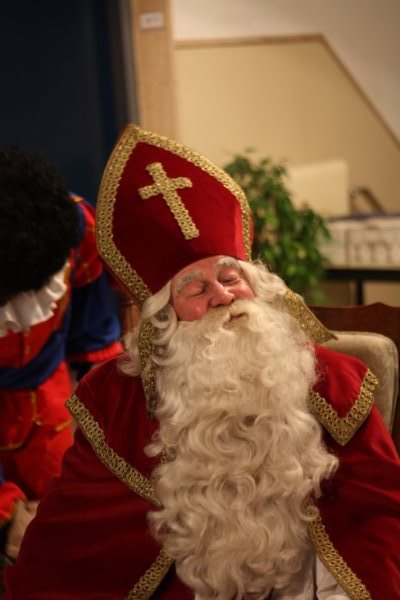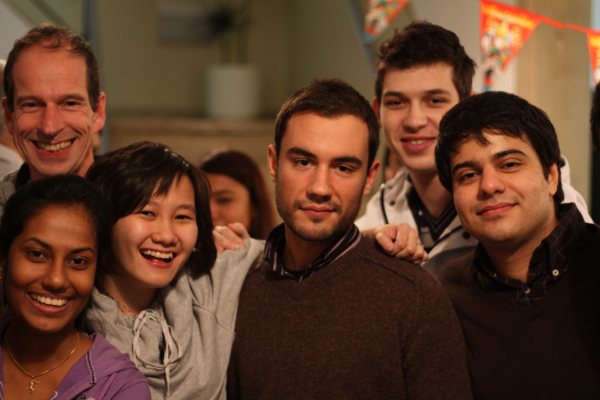Wittenborg Online News!
Surprise Visit by Saint Nicholas

Surprise Visit by Saint Nicholas
Wittenborg students were given a surprise visit by St Nick at school on Friday, who braved the strict laws of Deventer that forbids the holy man to tread the streets of the city before the actual eve of his birthday (5th December).
From Wikipedia:
Saint Nicholas (Greek: Άγιος Νικόλαος , Agios ["saint"] Nikolaos ["victory of the people"]) (270 - 6 December 346) is the common name for Nicholas of Myra, a saint and Bishop of Myra (Demre, in Lycia, part of modern-day Turkey). Because of the many miracles attributed to his intercession, he is also known as Nicholas the Wonderworker. He had a reputation for secret gift-giving, such as putting coins in the shoes of those who left them out for him, and thus became the model for Santa Claus, whose English name comes from the Dutch Sinterklaas. His reputation evolved among the faithful, as is common for early Christian saints. In 1087, his relics were furtively translated to Bari, in southeastern Italy; for this reason, he is also known as, Nicholas of Bari.
 The historical Saint Nicholas is remembered and revered among Catholic and Orthodox Christians. He is also honoured by various Anglican and Lutheran churches. Saint Nicholas is the patron saint of sailors, merchants, archers, and children, and students in Greece, Belgium, Romania, Bulgaria, Georgia, Russia, the Republic of Macedonia, Slovakia, Serbia and Montenegro. He is also the patron saint of Barranquilla, Bari, Amsterdam, Beit Jala, Siggiewi and Liverpool. In 1809, the New-York Historical Society convened and retroactively named Sancte Claus the patron saint of Nieuw Amsterdam, the Dutch name for New York City.[3] He was also a patron of the Varangian Guard of the Byzantine emperors, who protected his relics in Bari.
The historical Saint Nicholas is remembered and revered among Catholic and Orthodox Christians. He is also honoured by various Anglican and Lutheran churches. Saint Nicholas is the patron saint of sailors, merchants, archers, and children, and students in Greece, Belgium, Romania, Bulgaria, Georgia, Russia, the Republic of Macedonia, Slovakia, Serbia and Montenegro. He is also the patron saint of Barranquilla, Bari, Amsterdam, Beit Jala, Siggiewi and Liverpool. In 1809, the New-York Historical Society convened and retroactively named Sancte Claus the patron saint of Nieuw Amsterdam, the Dutch name for New York City.[3] He was also a patron of the Varangian Guard of the Byzantine emperors, who protected his relics in Bari.
For his help to the poor, Nicholas is the patron saint of pawnbrokers; the three gold balls traditionally hung outside a pawnshop symbolize the three sacks of gold. People then began to suspect that he was behind a large number of other anonymous gifts to the poor, using the inheritance from his wealthy parents. After he died, people in the region continued to give to the poor anonymously, and such gifts were still often attributed to St. Nicholas.
A nearly identical story is attributed by Greek folklore to Basil of Caesarea. Basil's feast day on January 1 is considered the time of exchanging gifts in Greece.
402 words